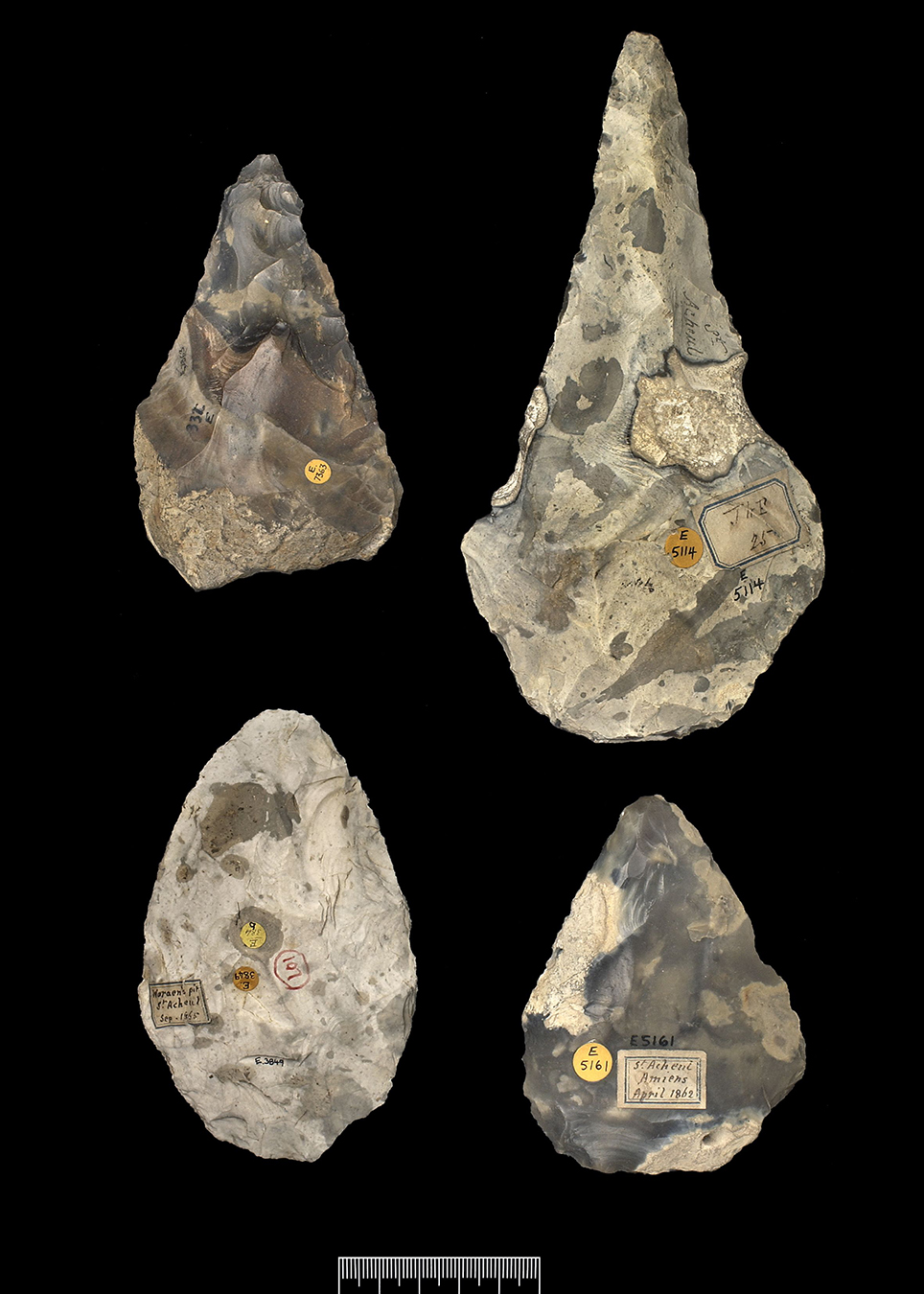|
 Description:
Description: Lower Palaeolithic industries in Britain are characterized by bifacial hand-axes of the Acheulean variety. These tools are made by removing flakes to produce a tool from a stone core, sometimes with a hammerstone but more often with a bone, antler, or piece of wood. Most Lower Palaeolithic tools are flaked symmetrically on both sides. The British Lower Palaeolithic also includes the Clactonian industry, which was first identified at Clacton, Essex. At Clacton these flake tools were found in association with objects made out of materials other than stone, such as the spectacular Clacton wooden spear. Whether Clactonian tools represent a truly different industry, or indeed a different human culture, than other Lower Palaeolithic artefacts is a matter of some debate. At several British sites, notably at Swanscombe, Clactonian tools seem to appear first in the sequence to be replaced later by typical Lower Palaeolithic tools. If Clactonian tools are associated with a different culture, then this evidence suggest that Clactonians were the first to colonize Britain as the Great Interglacial, the Hoxnian, began and that they were followed by other, distinct peoples. Unfortunately, no skeletal remains have yet been found in association with Clactonian tools.
Lower Palaeolithic type tools have been produced by H. erectus, H. heidelbergensis, and, in Africa, H. sapiens.
|

